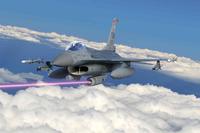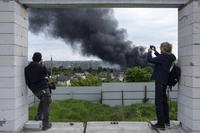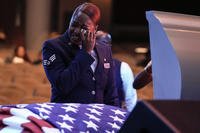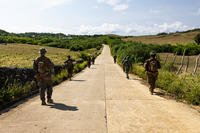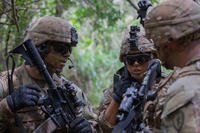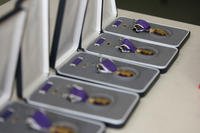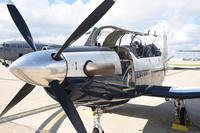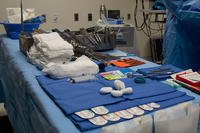Authorities were quick to respond when a massive cargo ship crashed into the Francis Scott Key Bridge in Baltimore, collapsing the span and killing six people, and several agencies promptly launched probes into the deadly disaster.
The 984-foot Dali weighed some 112,000 tons loaded with containers when it left the Port of Baltimore early in the morning of March 26. The ship lost all power while approaching the bridge and drifted into one of its support columns, toppling the span.
Here’s what we know about the various investigations:
National Transportation Safety Board
The NTSB’s Office of Marine Safety and Office of Highway Safety are examining what went wrong aboard the Dali and the structural components of the bridge, respectively.
The agency investigates through the lens of safety and with the goal of preventing similar tragedies from occurring, not holding anyone liable.
Investigators have searched the Dali’s engine room for answers about why the vessel lost power. They brought in representatives from the ship’s manufacturer, Hyundai, to help extract data from the electrical system and circuit breakers.
Alarms indicating an inconsistent power supply to refrigerated containers sounded on the Dali before it left the port, according to the City of Baltimore’s lawsuit against the ship’s Singaporean owner and manager.
NTSB investigators have interviewed members of the Dali’s predominantly Indian crew and the Maryland pilots who boarded the vessel to guide it out of port and under the Key Bridge safely. They also questioned Coast Guard watch standers and took statements from tugboat operators.
Two tugs guided the Dali away from the port’s Seagirt Marine Terminal but cast off once the ship was in the main McHenry shipping channel.
NTSB Chair Jennifer Homendy told senators in April that she expected the agency’s “preliminary report will not be out until the first week of May.” The NTSB is still preparing that report but expects to announce the release date “in the coming weeks,” spokesman Peter C. Knudson said last week.
The preliminary report outlines the agency’s factual findings. A final report, which comes one to two years after an investigation begins, includes conclusions and safety recommendations.
The Coast Guard
Coast Guard officials convened a Marine Board of Investigation, tasking investigators with “thoroughly” examining the ship crash “in accordance with all applicable statutory and regulator mandates,” according to a March 26 memorandum outlining the investigation. The board has to submit a report to the Coast Guard Commandant with its findings, conclusions and recommendations within a year.
Petty Officer Michael Himes described the Marine Board investigation as “complementary” to the NTSB investigation, saying the NTSB was designated as the lead agency. He declined to further comment.
At a news conference the day after the bridge collapse, Homendy credited the Coast Guard with boarding the Dali to download information from its voyage data recorder — a simplified version of an aircraft “black box” — and providing it to the NTSB for further analysis.
Describing the Coast Guard as “the regulator of U.S. maritime operations,” Knudson said the NTSB relies on the Coast Guard to provide a range of data for its investigation, such as information about mariner licenses and vessel operations, ship inspection and violation history, as well as local knowledge of the port.
“In addition, the USCG provides significant on-scene assistance, such as travel to vessels at anchor or assisting with interviews of crew members, and general coordination of on-scene activities,” Knudson said.
It’s common for those agencies to work together in a maritime accident investigation, said Thomas Roth-Roffy, a former NTSB investigator of almost 20 years.
He said it’s possible the NTSB took the lead in this case because it’s a multimodal investigation involving a bridge, highway and ship.
In a phone interview, Roth-Roffy harked back to investigations he led, such as the NTSB’s probe into the U.S.-flagged cargo vessel SS El Faro, which lost propulsion in the middle of a hurricane in 2015 and sank near the Bahamas along with its 33-person crew
“The Coast Guard was more than just another party in the investigation,” he said. “They were a close partner.”
While the agencies’ investigations may be complementary, Roth-Roffy said, the Coast Guard, unlike the NTSB, can enforce violations of marine regulations or law.
“Conclusions and recommendations concerning commendatory actions or misconduct that would warrant further inquiry shall be referred by separate correspondence to the cognizant District Commander for consideration and action,” the Coast Guard’s investigative memo says.
The FBI
The FBI was at the scene of the bridge collapse the day it happened, but its involvement escalated April 15, when agents boarded the Dali to serve a search warrant.
The exact scope of the FBI’s investigation into the Key Bridge collapse is unclear. It’s also not known what agents confiscated while aboard.
Before federal agents serve search warrants, they have to articulate in writing their suspicion that a crime occurred. Only if the evidence meets the legal standard of “probable cause” will a judge sign off on a search warrant.
It’s common for the paperwork associated with search warrants to remain under seal in court records long into an investigation and any subsequent criminal case.
The FBI likely is looking at whether a pre-Civil War statute known as “seaman’s manslaughter,” which has been applied in past American maritime disasters, is applicable here.
That law says neglect or misconduct leading to death by the ship officer is punishable by up to 10 years in prison. It also applies to the companies that own and charter vessels when their “fraud, neglect, connivance, misconduct, or violation of law” leads to death.
FBI agents typically do not investigate in a vacuum, but in collaboration with prosecutors from the Maryland U.S. Attorney’s Office or from another branch of the Department of Justice.
“Often in these high-profile matters there would be significant involvement by prosecutors in Washington in addition to the local U.S. attorneys,” former Deputy U.S. Attorney General and Maryland U.S. Attorney Rod Rosenstein said in an April interview after agents raided the ship.
Maryland Occupational Safety and Health
Seven construction workers from Brawner Builders Inc. were on the Key Bridge, taking a break from filling potholes on Interstate 695, when the Dali struck. A state inspector who also was present was able to get to part of the span that didn’t collapse, while one of the construction workers survived by clinging to a piece of debris.
The six others died. Five of their bodies have been recovered.
Maryland Occupational Safety and Health, or MOSH, a branch of the state Department of Labor that investigates workplace injuries and deaths, launched an investigation the same day workers were sent plummeting into the river.
A MOSH spokesperson declined to comment, citing the agency’s ongoing investigation.
William F. Alcarese, a former safety officer with MOSH and its federal counterpart, the Occupational Safety and Health Administration, said such workplace probes look at whether employers abided by regulations designed to keep their workers safe.
He believes investigators will be looking at whether there was an emergency plan in place for the Brawner employees working on the bridge.
“In this case, you had workers on the bridge, was there a communication plan in place? Was there a policy in place for communication?” said Alcarese, noting that bridges are often closed because of inclement weather, such as high winds. “It’s like trenches: Most trenches don’t cave in, but when one does, it can be catastrophic. That’s why there are plans in place.”
Alcarese also pointed to a federal occupational safety regulation that requires employers who put workers over or adjacent to water have a “lifesaving skiff … immediately available.”
Jeffrey Pritzker, executive vice president of Brawner, declined to say whether the company had a rescue boat in the water, citing the MOSH investigation.
“I don’t know that Brawner Builders could’ve taken any more action than that which was taken the evening of the tragedy. Brawner’s safety protocols were consistent with those taken over the last 40 years with similar work,” Pritzker said. “Who would have ever anticipated that a bridge would come down?”
Alcarese expects the workplace investigation to examine the roles of Brawner and the state, which contracted the company.
Officials were quick to praise the work of Maryland transportation police officers who swiftly blocked traffic from going onto the bridge after receiving a mayday call about the drifting ship from the pilot. But attorneys for the families of two victims and one survivor say the workers weren’t notified.
Transportation police, the Maryland Department of Transportation and the Maryland Port Authority declined to say whether they are conducting reviews in response to the collapse, citing the Dali’s owner and manager’s civil court action to clear themselves of liability related to the disaster.
“The pending litigation related to the Key Bridge collapse (limitation of liability action) and anticipated future litigation prevents the Maryland Department of Transportation, the Maryland Transportation Authority, and the Maryland Port Administration from disclosing the existence of investigations or reviews,” the agencies said in a joint statement.
©2024 Baltimore Sun. Visit baltimoresun.com. Distributed by Tribune Content Agency, LLC.

